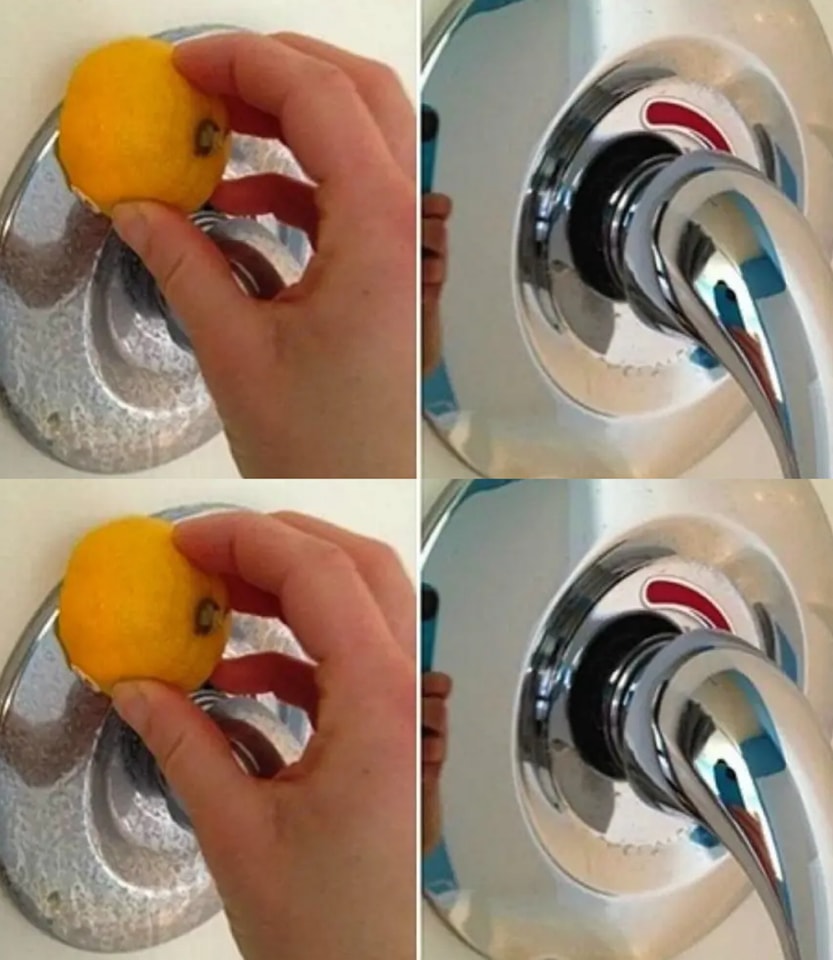ADVERTISEMENT
**The Trick to Leaving the Faucet Looking Like New: How to Keep Your Faucet Sparkling and Fresh**
A sparkling clean faucet is often a mark of a well-maintained home. However, over time, faucets can become tarnished, discolored, or covered in mineral deposits and water stains. Fortunately, with a few simple cleaning techniques and preventative measures, you can keep your faucet looking as fresh and new as the day it was installed. Here’s the trick to leaving the faucet like the first day, no matter how long you’ve had it!
### Why Faucets Lose Their Shine
Faucets are exposed to constant water flow, which means they’re often subject to minerals, soap scum, and hard water deposits. Additionally, common cleaning chemicals, grime, and even hard water can leave residue on the surface. If you live in an area with hard water, it can cause lime scale or calcium buildup, which can dull the finish of your faucet. Even normal cleaning can sometimes inadvertently cause scratches or damage to the faucet’s protective coating, making it more susceptible to further wear.
But don’t worry — with a few simple tricks and maintenance tips, you can keep your faucet gleaming for years to come.
### The Trick to Leaving the Faucet Like New
Here’s how to clean, protect, and maintain your faucet to keep it looking as good as new:
#### 1. **Daily Wipe Down with a Soft Cloth**
To prevent water spots and mineral buildup from forming on your faucet, it’s important to wipe it down regularly. After using the faucet, grab a soft microfiber cloth or a towel and gently wipe the surface to remove any moisture. This will help prevent water spots from drying and becoming a permanent fixture on your faucet.
#### 2. **Use the Right Cleaning Products**
While it might be tempting to reach for harsh chemical cleaners or abrasive pads, these can actually damage the surface of your faucet over time. Instead, opt for non-abrasive cleaning products that are safe for the finish of your faucet.
Here’s what you can use:
– **Dish soap and warm water**: For regular cleaning, a mild dish soap diluted in warm water is gentle enough to clean your faucet without harming its surface.
– **Vinegar**: If your faucet has mineral deposits or hard water stains, white vinegar is a great solution. The acidity in vinegar helps to dissolve mineral buildup and restore shine.
– **Baking soda**: Mix baking soda with water to form a paste and gently scrub areas with stains or discoloration. Baking soda is mildly abrasive but won’t scratch the surface like harsher cleansers.
#### 3. **Deep Clean with Vinegar Soak for Mineral Buildup**
If you notice mineral deposits around your faucet, especially near the aerator or along the spout, a vinegar soak can work wonders. Here’s how to clean the faucet with vinegar:
1. **Soak a Cloth in Vinegar**: Soak a soft cloth in white vinegar and wrap it around the faucet or the affected area. You can even soak the faucet’s aerator (the small mesh screen on the spout) in vinegar for a few hours if it’s clogged with mineral deposits.
2. **Let It Sit**: Allow the vinegar-soaked cloth to sit for about 30 minutes to an hour. The acidity in the vinegar will dissolve mineral deposits and grime without harming the faucet’s finish.
3. **Scrub**: After soaking, gently scrub with a soft toothbrush or sponge to remove any remaining buildup.
4. **Rinse Thoroughly**: Make sure to rinse the faucet thoroughly with clean water to remove any vinegar residue.
4. **Polish the Faucet After Cleaning**
For Complete Cooking STEPS Please Head On Over To Next Page Or Open button (>) and don’t forget to SHARE with your Facebook friends
ADVERTISEMENT
